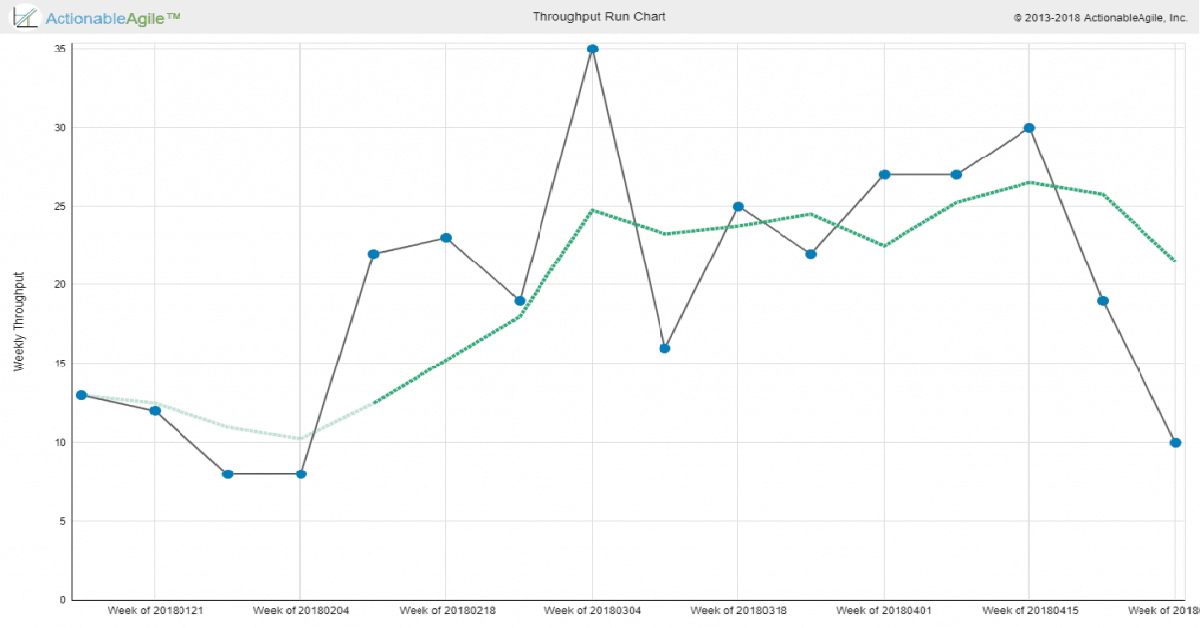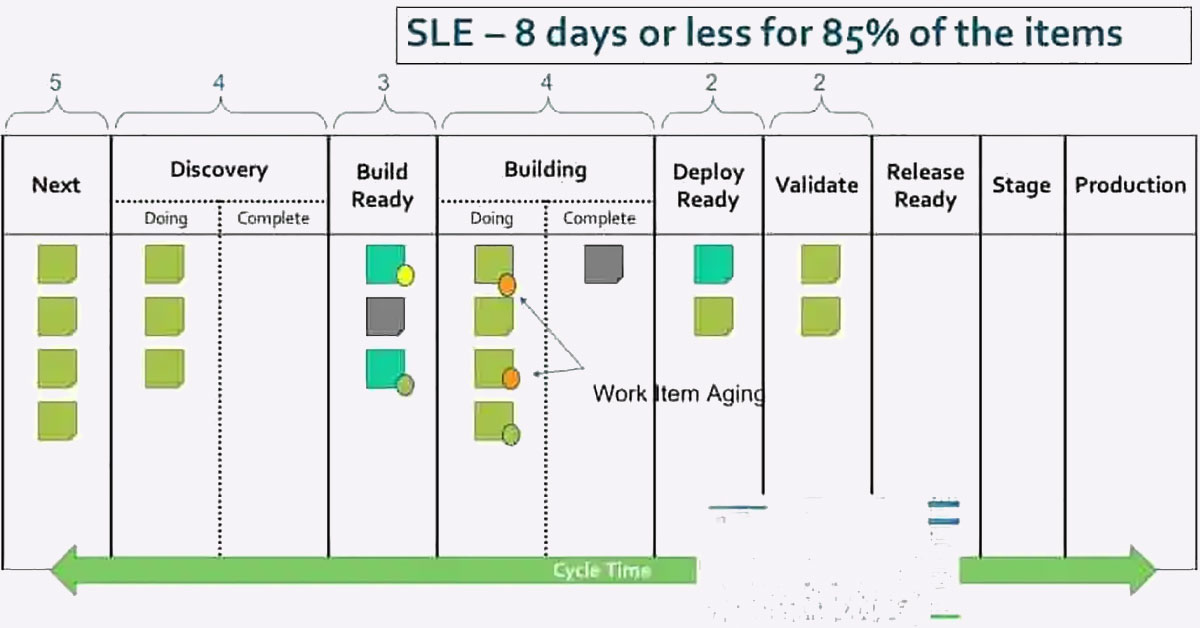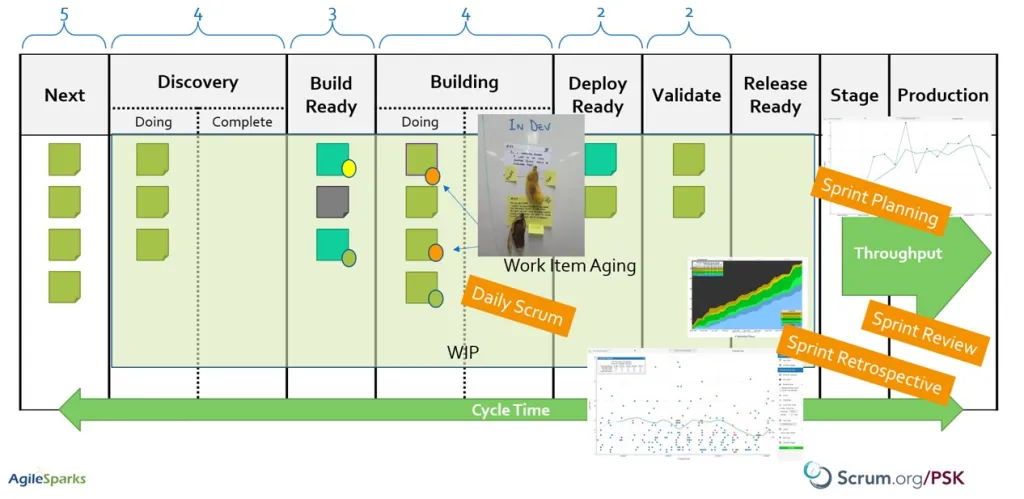
Scaling Agile Reading List
Scaling Agile Reading List Dave Snowden “Put brutally SAFe Implementation Roadmap – Scaled Agile Framework Implementing – Scaled Agile Framework portfolio+kanban Here Be Dragons –

Scaling Agile Reading List Dave Snowden “Put brutally SAFe Implementation Roadmap – Scaled Agile Framework Implementing – Scaled Agile Framework portfolio+kanban Here Be Dragons –

The Premise
A year ago Scrum.org, in collaboration with Daniel Vacanti and myself, published the Kanban Guide For Scrum Teams, a guide that is aimed at helping Scrum Teams take advantage of Kanban/Flow principles and practices. (I wrote an earlier blog post about understanding the guide)
SAFe™ has included Kanban at all levels since version 4.0. Some basic guidance about Kanban is included in most if not all SAFe curriculums. Can a SAFe practitioner learn anything from the Kanban Guide For Scrum Teams?
In this blog post, I’ll explore some of the flow metrics from the guide with an emphasis on those that aren’t covered in SAFe.

To Team or not to Team?
If you look at the definition of Kanban or Lean, you wouldn’t find teams anywhere there.
If you look at the Agile Manifesto, you can find “The best architectures, requirements, and designs
emerge from self-organizing teams”
Scrum is quite clear about the topic

One of the new concepts we introduce in the Kanban Guide for Scrum Teams is the Service Level Expectation, defined as:
An SLE forecasts how long it should take a given item to flow from start to finish within your workflow. The SLE itself has two parts: a period of elapsed days and a probability associated with that period (e.g., “85% of work items will be finished in 8 days or less” which can also be stated as “8 days with 85% confidence/probability”).

Co-Creating and teaching the new Scrum.org Professional Scrum with Kanban class has given me an opportunity to get back to geeking out on WIP limits, flow metrics and all things Kanban. And it’s been fun!

In the Kanban Guide for Scrum Teams and the Professional Scrum with Kanban workshop, we introduce 4 key flow metrics that we believe Scrum teams

It’s been so exciting to hear so much positive feedback and interest in the new Scrum.org Kanban for Scrum Teams guide and the accompanying Professional Scrum with Kanban class. Creating the class and guide together with Daniel (Vacanti) & Steve (Porter) and then working on getting it to market in a professional way (how else? ) with the Scrum.org staff has been a great experience and a major focus area for me in the last couple of months.
As you might imagine, together with the interest come some questions about some choices we made in the design of the guide and the class. Several are emerging as the frequently asked ones. I wanted to tackle a couple of those in this post.
Where are some of the core Kanban practices?

The Email Inbox – The real Personal Kanban frontier
I’ve been struggling for years with visualizing my personal work using Kanban.
Using a physical board isn’t that practical since a lot of the time I actually do my work I’m not at my office.
I then tried Kanban tools such as LeanKit, Trello (and even AgileZen…). This worked pretty well for a while, but I kept falling out of it. Something was missing.

* Boards | Trello Map your work, control your life: Personal Kanban Productivity 101: An Introduction to The Pomodoro Technique PopcornFlow: If change is hard,

The Kanban method is built around improving the flow of product development. It works very well when you work according to priority. It also works well when some items have schedule constraints. When many items have schedule constraints this becomes an issue.
The Motive
I was having a discussion with one of my clients and they raised the issue that what was going on wasn’t clear. Immediately I thought of setting up a Kanban board. However, when we started to do that it became clear that the main issue is how to commit to clients about deliveries.
Request for additional information